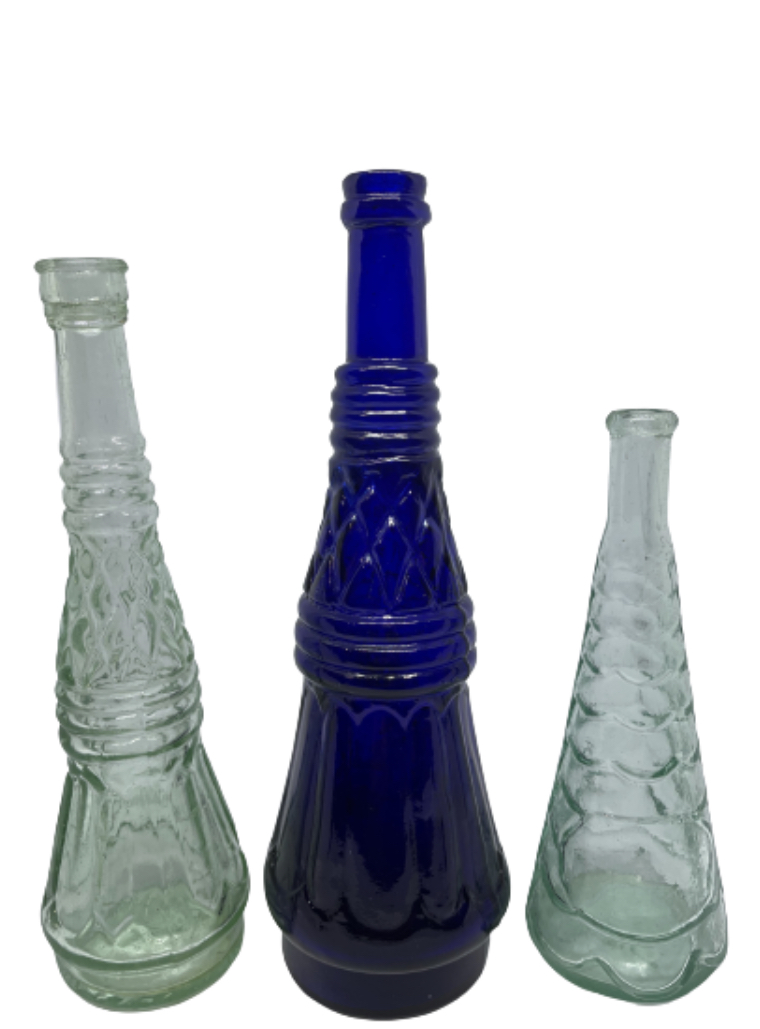British Diamond Registry Marks
Diamond Registration Marks were first introduced as a method of recording the design patents between 1842 and 1883. The 1842 Ornamental Designs Act was superseded in 1883 by a new act. The registered designs were intended to identify the rightful owner and to prevent other users from copying the design for a period of three years (see Note below). The Diamond Mark is a clever way to record information in one simple lozenge. This was the period when designs of bottles were used to sell the product, and it seems apparent that great rivalry existed between manufacturers who spared no effort in producing a wide range of articles.
(NOTE)
The Registration Design Act of 1842 provided copyright for a period of three years. After that period any manufacturers could copy or use the registered design, excluding registration diamond mark.
For over 41 years from 1842 British glassmakers were involved in an era when food bottles and jars were made to look as elaborate as possible, with their designs having scallops, arches, ribs, flutes, tear drops, petals and open-arched cathedral panels. Even though the Registration Design Act began in 1842, the first known registered bottle design was in 1845. There was a charge to register designs. Registration of design was not compulsory. Many designs were not registered. Bottles for which their design was registered also exist without the registration diamond. This indicates they were made either before or after the three-year period of registration. Bottles of registered design bear the registration diamond.
There are two very similar diamond marks. The first was used between 1842 to 1867. The second was used between 1868 to 1883. The ‘first session’ and ‘second session' diamond marks have slight differences in the placement of certain marks and their meanings.
Material Class
The top segment of the mark, which is a small half circle on the top apex of the diamond, indicated by roman numerals, denotes the material used. Class 3 indicates glass.
Year
For all diamond marks, the year is represented by a letter code, with different meanings depending on the placement of the code. There is a code from cira.1842 - 1867 and another from cira.1868 - 1883. On marks for the first session, the year symbol is below the material class symbol. The year symbols for the second session is positioned on the right-hand side of the diamond. Some letters were not used in the second diamond period.
For the second period, diamond marks registered on the 1st to the 6th of March 1878 (W) was used incorrectly at the beginning of the month of March because they mistook the month letter (March = W) for the Year letter. Although not all the letters were utilized in the period 1868-1883. A new registration system was adopted in late 1883 - 1884 by adding" Rd. No." followed by a digit/digits, in place of the diamond.
Day & Month
The Day is recorded on the furthest right of the first iteration 1842 - 1867 space on the diamond mark, and directly below the class mark on the second iteration 1868 - 1883 of the diamond mark. It is the exact day the design of the item was registered. Unlike the month or the year, day numbers directly represent the actual day of the year it was registered. In the example diamond lozenge below the 27th and the 21st numbers show the exact placement on both the early 1842 and the later 1868 registration marks.
For the Month there is another letter cypher to deal with. However, this time the meaning of the month doesn’t vary across the two iteration versions, although it's placement does.
*There are some slight variations.* Between the 1st and 19th of September 1857, R was used. For December 1860, K was used, and for the 1st to 6th of March 1878, G was used.
Bundle
The 4th mark in the registration diamond is the bundle number. It is indicated by a number which is actually a code that was created on the day and was used to identify the person or company, so as not to confuse the details if two or more designs were registered that day.
Above information, should enable you to determent when your item was registered. But it doesn’t stop there - the fun part is now using this registration date to find out who might have made it!
Research
All registry marks are for British designed (and usually, manufactured) items. The details are recorded in the National Archives of the United Kingdom.
The example in the table codes below illustrate the circ.1842-1867 year codes, seen to the left. The registry mark indicates a complete registry date, comprising (a) the day of the month = 27th in this case. The next is (E) = May, and the last is (R) = 1861. This lets us know that the earliest the bottle could have been made is 27th of May 1861.








